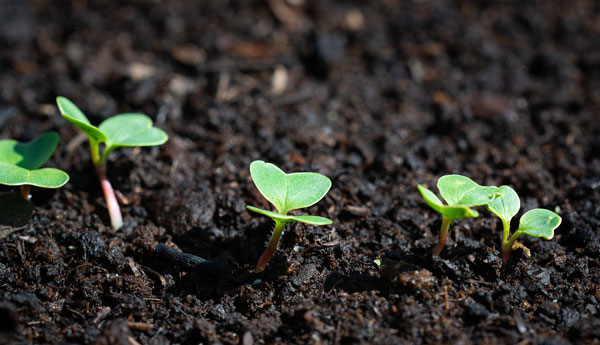
I know, I know, your feed plot should already be well underway. But if you’re like me, summer chores got the best of you, and you’re a little late putting it in the ground. The good news is, you’re not too late, particularly if you’re south of the Mason-Dixon like myself. Brassicas and tender cereal grains are damn near irresistible to whitetail, are easy for even novices to plant and, best of all, can survive blowing snow and icy cold. Here are a few planting tips for your procrastination-plot.
Placement
As the summer sun has all but abated, try to avoid shady areas. Your plants will need all the sunlight you can get them. Rocky ground, sandy spots, and anywhere with poor moisture are also good to avoid. To dodge early frost, try to stick to higher ground (heat rises, after all), though that’s less crucial for these hardy plants.
Brassicas
Of course the whole magic of brassicas revolves around frost. You see, after the first frost, the weather turns their starches into sugars, which deer just cannot get enough of. Mustard-type plants, they have large green leaves, and some (like turnips and radishes) have root bulbs. The large leaves are an added bonus, as the shade they impose upon the ground crowds out most weeds around them, while still allowing them to soak up what sunlight is left in the day.
To prepare soil, kill anything in the area with glyphosate herbicide. Then add a 19-19-19 fertilizer, along with some lime (a ton per acre is recommended, but just use that as a baseline, as I’m sure most feed plots will be far smaller). Then till the soil, pack (or cultipack) it down, and scatter seeds at roughly four to nine pounds per acre. Repack, or if your area is small enough to measure, add about a quarter inch of lightly packed dirt over the seeds.
Cereals
For deer, we are mostly talking oats, wheat and rye. These will draw your deer a little before the brassicas, and should be planted no later than September, while brassicas can be planted through November (at least in the South).
Rye is the easiest to plant. Spread it out on a tilled plot, and you’ll have a full grown field in no time. If you have a disker, even better and a cultipacker, better still. The protein level (which attracts deer) is a modest 10-15 percent.
Oats are a little harder, but their protein sits at 15-25 percent, and are preferred by whitetails. A cold-tolerating species, oats can perform through the winter. If they get over five-inches, mow them back down to 3, as they are too tough to interest deer at that height.
Wheat has 12-20 percent protein, and rebounds from grazing well. Both wheat and oats can be planted 1/2 an inch to an inch down in a tilled plot, before packing for germination. It should also be kept to no more than five inches in height.
Those are the basics and, this late in the season, that about all you’ve got time for. Head on out, get some seeds and get planting yall! Happy hunting.
A humble homesteader based in an undisclosed location, Lars Drecker splits his time between tending his little slice of self-sustaining heaven, and bothering his neighbors to do his work for him. This is mainly the fault of a debilitating predilection for fishing, hunting, camping and all other things outdoors. When not engaged in any of the above activities, you can normally find him broken down on the side of the road, in some piece of junk he just “fixed-up.”

William Lloyd Johnson III says
What research has brassicas becoming sweeter with starch becoming sugar ?Old wives tale IMO .